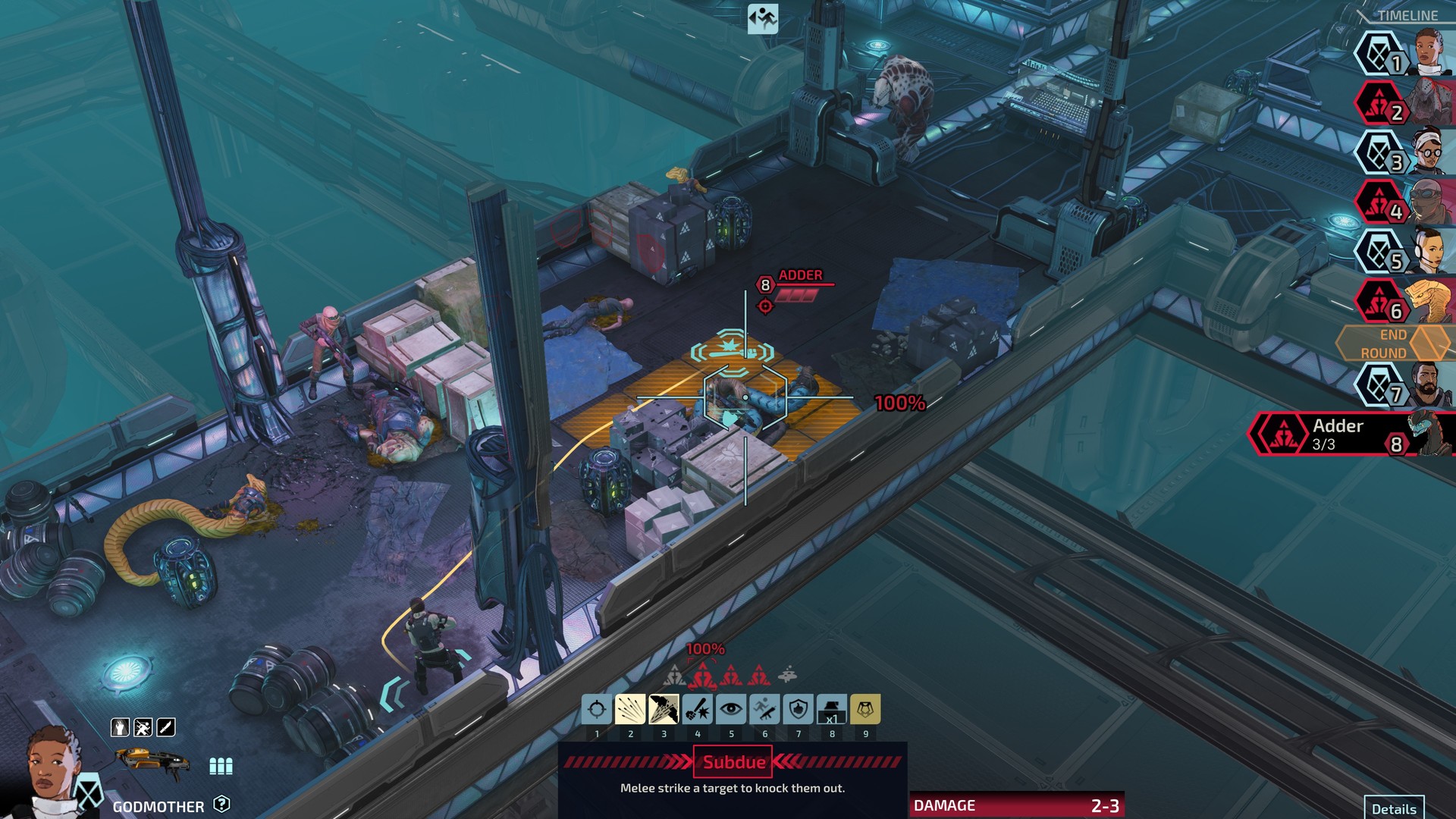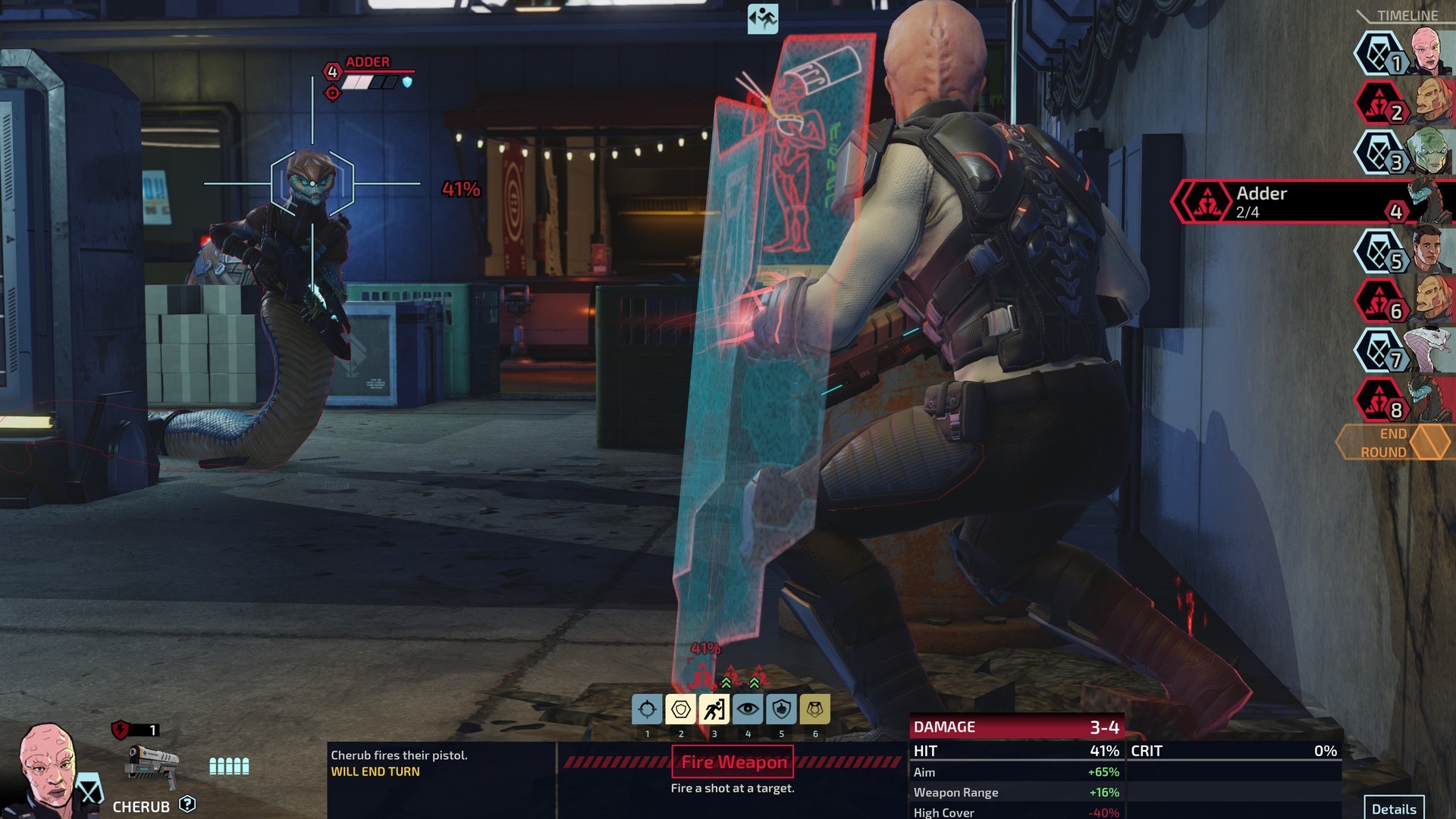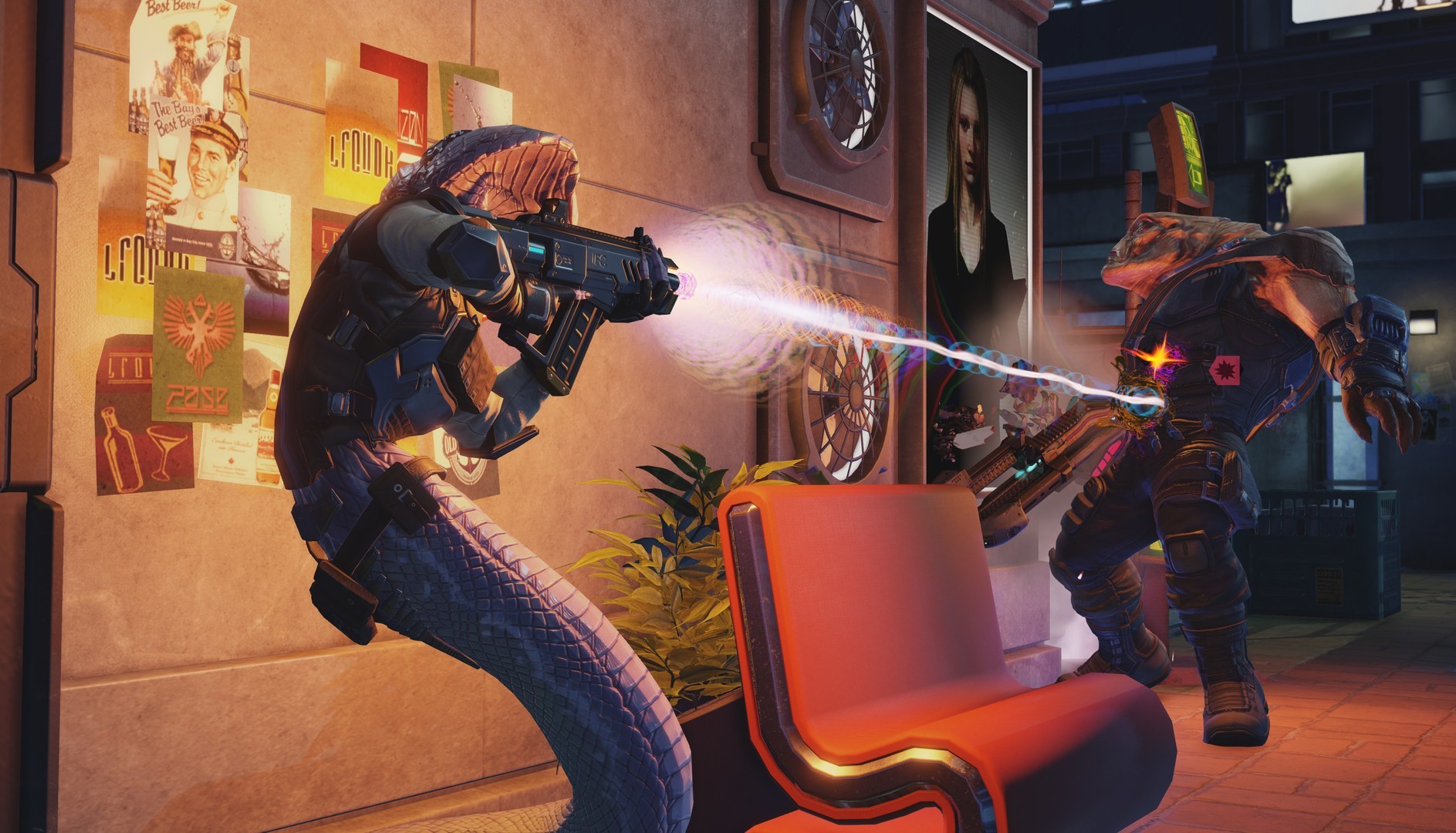
As a fan of the original XCOM 2, a turn-based tactical strategy game that was improved considerably with the release of The War of the Chosen expansion a few years later, XCOM: Chimera Squad was a no-brainer for me. More importantly, it is a standalone sequel, doesn’t need any of the original content, and something quite special all on its own.
By stripping out a lot of the tactical nuance from the original game, this title effectively swaps the ‘tactical strategy’ tag for a new one: ‘tactical combat experience’. In short, there are no large maps and landscapes here; you’re just thrown straight into the combat section on every mission. Arguably, that’s the best part for most of us, even if we miss out on some of those classic long-range sniper shots from the original, the ones that make you punch the air when they land true…
Following the climax of XCOM 2, we’re in the post-war dream of a city where humans and aliens live and work side-by-side, made real by the foundation of City-31, but all that work is about to be shattered: rogue factions have a different agenda, it seems, and you have to do something about that.
You’ll be starting with a rag-tag bunch of four elite soldiers (human and alien), and it’s your job to train them up, give them additional skills and abilities and add new members to the team – all the while working your way through each of the three mini-campaigns as you go. Unlike previous games, the soldiers you can recruit here are all pre-defined, and a nice touch is that each has their own distinct character and style which comes through in some exchanges and banter between them at the start of each mission.
The three factions are The Progeny, Gray Phoenix, and The Sacred Coil, and each has its own speciality: The Progeny are mostly psionics-based enemies, for example. These factions can be taken on in whichever order you wish, but you have to work your way through each separately, so there’s no hopping from one and the other here: you’ve got a series of missions to complete for each one, and a selection of ‘Situations’ to choose as you go. Rinse and repeat. I’d leave the Psionics until later, but that’s a personal choice.

Worth noting is that situations aren’t actually played out (they just move the timer forward), but each will offer an additional reward in the form of credits, Intel or elerium. Credits are used to buy stuff and elerium to research stuff. Meanwhile, Intel is used for everything else: to expand your team, buy and improve your field teams (see below), and obtain selected special items via the shady-sounding Scavenger Market. Intel is probably the most valuable resource in the game, and while credits are needed to buy additional weapons and utility items throughout (especially at the start), elerium is required to improve your weapons and tech. At the latter stages of the game, I didn’t find Credits and Elerium that useful. By the time you get to the last few missions against the final faction, and the obligatory ultimate showdown, your squads are pretty much fully developed and you’ll have most of the tech you need already.
City-31 is split into nine districts, and each will have its own level of unrest, ultimately contributing to an overall ‘City Anarchy’ level. Keep this in check by quelling the levels of unrest in each district, and it’s here where all your mission choices and situations come into play. To help, you’ll buy and improve field teams for each district, and these will provide a weekly income of resources, depending on your choices and what level you’ve trained them up to. I found this a much-improved system over the original, it must be said.
There are a few other aspects to do with managing your squad members: kitting them out, using them for research, for Special Ops that give one-off benefits, or putting them through additional training (or healing if they’ve suffered a major scarring injury), but the main thing you’ll be doing is combat.
The core of the game is built around the missions and, as mentioned earlier, these throw you straight in at the deep end. Every mission involves 1-3 encounters for four squad members, and each encounter starts with a Breach Phase. You’ll pick which squad members enter the encounter at each breach point, and in which order (and there may only be a single breach point, in which case you choose which order your squad will enter the scene), and each breach point will tell you in advance if squad members will gain any advantages or disadvantages by entering from there.
Probably one of the most exciting parts of each combat sequence is the way each breach point initially plays out: your agent will blast through a door, smash through a window, or maybe sneak through a gutter, and once inside you’ll be presented with a faded out frozen cut-scene that outlines your target(s). You can cycle through the different enemies you can shoot at, and in classic XCOM style it will tell you what percentage chance there is of landing a hit on each one. There are often several choices, and firing first and asking questions later is not always the best move, especially if you’re likely to suffer a counter-attack as soon as this phase is resolved. As cool as it feels when you take an enemy down before the encounter has properly started, one of your agents –Cherub– can take all the initial enemy shots without suffering damage, for example, while another –Zephyr– can single out a target and get up close and personal post-Breach. Fans of the original game might remember those annoying Vipers that could grab your characters with their tongues and slowly strangle the life out of them, and you now have your own in the form of Torque: a particularly kick-ass squad member who can handily spit poison at an enemy instead of shooting at them during the breach phase. Like I said, it is not always about shooting first, but that is a viable tactic!

Once the breach phase is finished, you’ll see all your squad members and enemies listed on the right-hand side of the screen in turn order, and this is where decisions need to be made: do you kill off or disorientate the enemies that are going next, or go for the bigger and badder ones that are likely to hurt you later on? Some agent abilities will let you shift this turn order around mid-encounter, and it is here where a lot of the tactical decision-making will take place: turn-based combat has never been so much fun, frankly!
Thankfully, the game has an easy and forgiving learning curve, and unlike previous iterations, you won’t find yourself outgunned and overpowered by regular enemies as the game progresses (they seem to level up quite evenly as your squad does), although there are obviously some that are much more dangerous than others, as well as a few bosses to take down in later missions. Your squad members won’t die as such either, although you will immediately fail an encounter if any of them bleed out (and thereby suffer a scarring injury…)
Overall, this game does what it says on the tin: it takes the core combat section of XCOM and makes it the focus of the game, and since that’s the favourite part of the original for many, it does a very good job of it mostly. Ahh yes, “mostly”, because some cut-scenes and action sequences will suffer from an adverse camera angle, and on at least a few occasions, you might find yourself completely disorientated by a camera angle that blanks out most of the screen. It’s an easy fix to move the camera or press TAB to focus on somebody else, but nonetheless quite disorientating the first few times you see it happen. Mine also tripped over and crashed a few times with a couple of graphics and sound glitches, but a series of regular updates suggests Firaxis is trying to resolve these as and when they can.
Several difficulty levels make for lots of replayability, and the order in which squad members get recruited also seems randomised. Other than that, it’s an excellent introduction to the core XCOM experience, and will no doubt deservedly bring many new fans on board.
Considering this is primarily an off-shoot, there’s plenty of game here for your money; easily 25-30 hours-worth for hardcore players, and probably closer to 50 for the rest of us. And that’s pretty excellent value, whatever yardstick you’re using.
REVIEW CODE: A complimentary PC code was provided to Bonus Stage for this review. Please send all review code enquiries to press@4gn.co.uk.
Subscribe to our mailing list
Get the latest game reviews, news, features, and more straight to your inbox
Thank you for subscribing to Bonus Stage.
Something went wrong.
XCOM: Chimera Squad Review
-
Gameplay - 9/10
9/10
-
Graphics - 8/10
8/10
-
Sound - 7/10
7/10
-
Replay Value - 8/10
8/10
Overall
Summary
Squad-based tactical combat done proper, as they say. A stylised take on the XCOM 2 universe, which takes out a lot of the strategic map positioning of the original (including those awesome sniper shots), but instead throws you straight into those all-important combat situations.
Pros
- Great gameplay and replayability.
- Cool, dynamic camera shots and graphics.
- Puts players straight into the thick of the action.
- Quick and easy to pick up and play in short bursts.
Cons
- Not the strongest plot / storyline.
- Occasional camera and sound issues.
- Some maps / encounter sets can feel repetitive.





